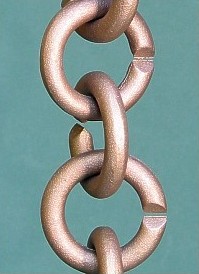
Wozzeck stands ankle deep in water on the flooded stage of the Bavarian State Opera, above him hovers a huge, movable box – the dingy apartment he shares with Marie and their adolescent bastard – and he is surrounded by a freak-show worthy of a George Groszian nightmare or worse.
Michael Volle portrays Georg Buechner’s and Alban Berg’s character with unparalleled intensity, such a beautiful baritonal sound even in the most harrowing moments, and such ease beneath the tortured surface, that it is almost too good. He did everything one could hope for in a Wozzeck on stage, but he never elicited much pity and never seemed quite as helpless-hapless as Wozzeck probably should. In a way, his great musical and dramatic strengths came at the expense of the character.

Something similar could be said about Andreas Kriegenburg’s direction – or more specifically the phenomenal lighting of Stefan Bolliger and how it works with the continuously fascinating set of Harald B. Thor and Andrea Schraad costumes: It is so absorbing, so good and stimulating to look at, it might distract from the psychological development of the characters. Monday night it also distracted from some so-so singing (Jürgen Müller underpowered and underwhelming as Drum Major and Clive Bayley with an average night as the Doctor) and in doing so, it unleashed the drama unto the audience in a visceral way that even Wozzeck-lovers might not have expected.
Because with this would-be quibbles taken care of, the fact remains that this was a stunning premiere, a spectacular performance, and indeed a striking success for the Munich Opera’s second new production under the new general director Klaus Bachler. Kriegenburg, a theater director, had done only two operas before (which I have not seen), but here he hit a nerve in just the right way. Instead of exerting a wilful personality, ideology, or aching modernization on Wozzeck, he gives us an internalized picture (set roughly in the time of the play’s premiere) where the world as Wozzeck sees it is how the audience sees it. Except for Marie and his son, the characters are distortions of their personalities, one more disturbing than the next. The crowds are hordes of unemployed, shadows in the world of Wozzeck’s steadily slipping sense of reality. When the apartment-within-the-stage begins to very subtly shift left and right, the visualization of this losing grasp on reality becomes so perceptible, it’s as if you could touch it. I felt like I could use a splash of cold water or a slap in the face myself.

Amid all this, Michaela Schuster’s Marie altered between pleasurable cantabile and appropriate crudeness, Wolfgang Schmidt earned merits with his cleanly sung, morbidly obese captain, and Munich’s tenor-for-everything Kevin Conners delivered a fine, sonorous Andres. Wozzeck was also a good night – to the hesitant surprise of the Munich critics – for music director Kent Nagano.
Speculations about his contract not being renewed are only slowly receding, discussions about a rift between the music- and general director are still indulged in with tabloid-like diligence by the feuilletons. But this performance was one for a mark in his supporter's good books. Nagano’s strengths emerge best in modern works where clarity is part of the musical success. The orchestra, apparently well rehearsed, gave the music an elastic, clear treatment; the score sounded taut and diaphanous. Only very occasionally was the orchestra too loud; more often it was very sensitive. When Nagano waded onto stage, barefoot and his trousers rolled up, he received as warm a reception as I’ve heard him get in Munich. Only Kriegenburg and his team got more – wholly absent of boos, too, perhaps a novelty for a premiere of a modern production in Munich.
If any Wozzeck production can convince the hesitating masses to listen to this difficult 20th century masterpiece, it would have to be this one.
All photos by Wilfried Hoesl, courtesy Bayerische Staatsoper.
 Here is your regular Sunday selection of links to good things in Blogville and Beyond.
Here is your regular Sunday selection of links to good things in Blogville and Beyond.






























































